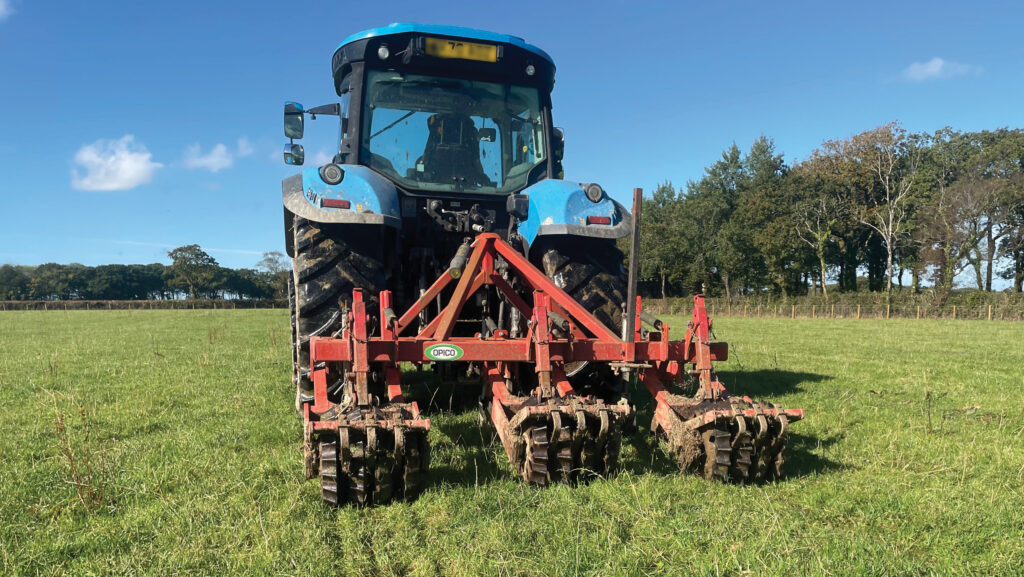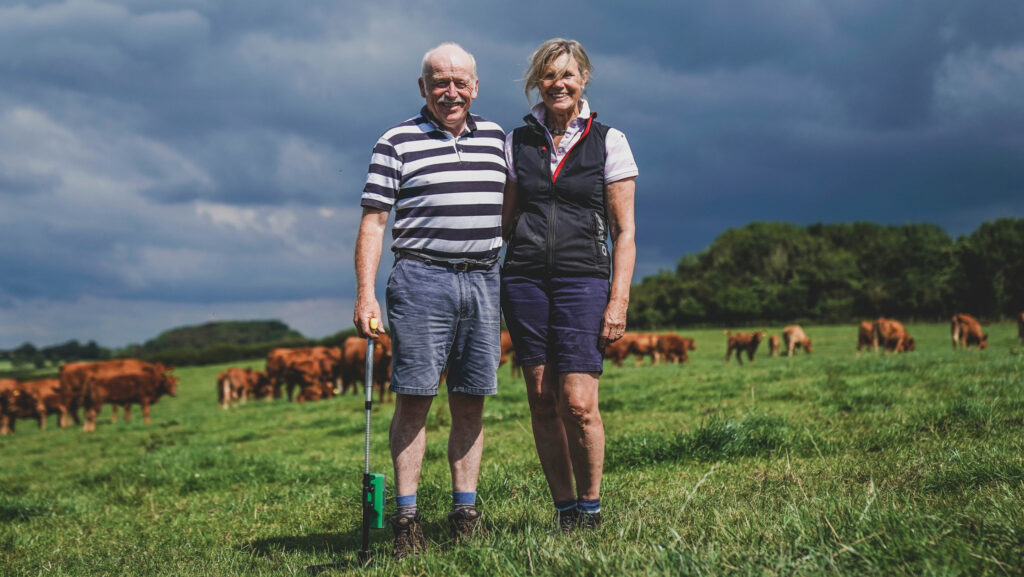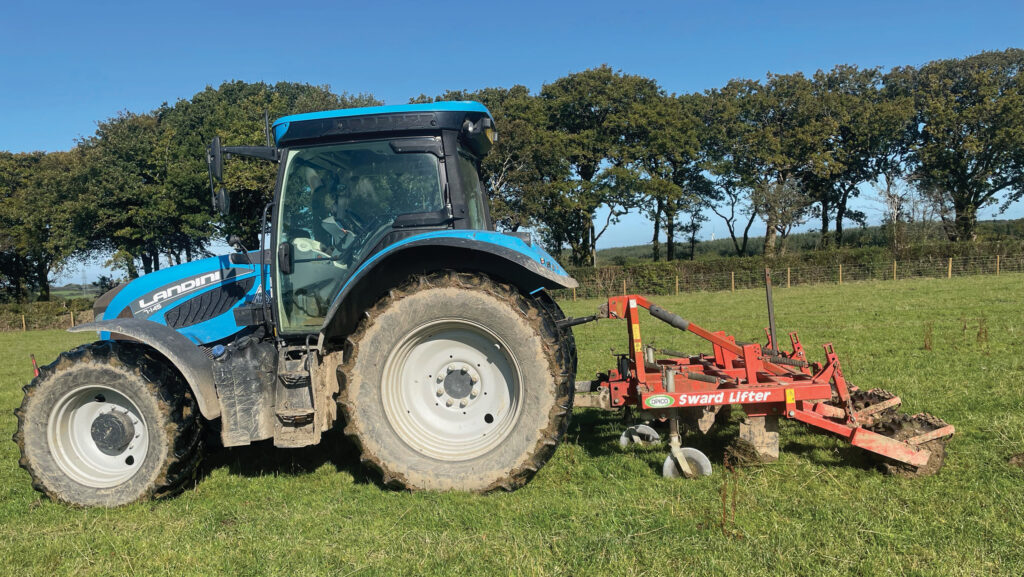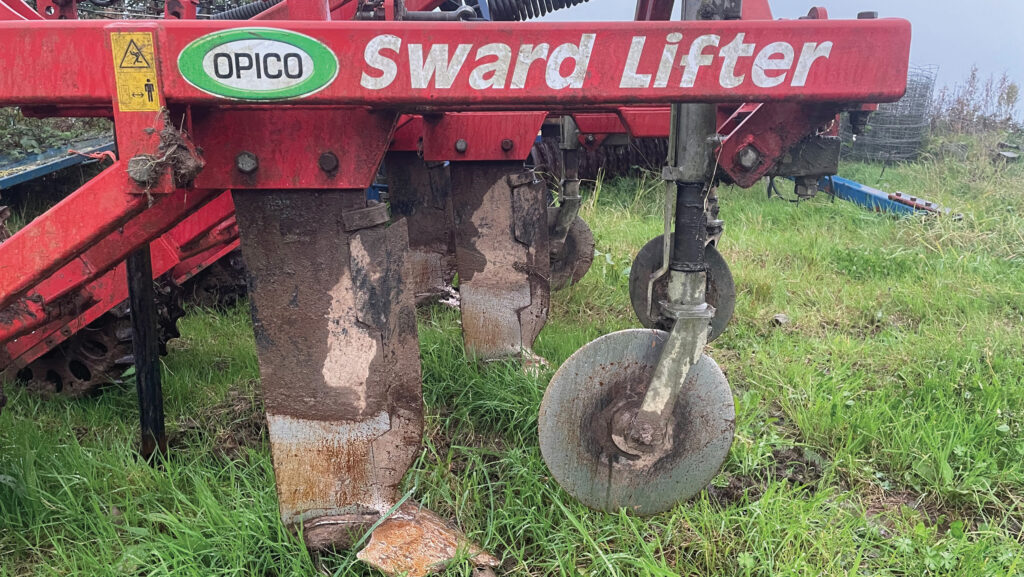Benefits of sward lifting for profit and environment
 © Bill Harper
© Bill Harper A decade of sward lifting on a Cornish farm has prevented run-off after heavy rainfall, shortened the winter housing period and is helping soils to sequester carbon.
A typical field at Trepoyle Farm in the Tamar valley, where Bill Harper farms with his wife, Suzanne, has some deep drainage installed in the 1960s or 1970s (some of which has silted up) and a system of old, shallow, clay pipes which are partially functioning.
Streams run through gulleys across the farm, and nearly all the fields have a wet spot in them.
See also: How organic beef farmers are benefiting from fermenting muck
Farm facts
Harpers Holdings, Trepoyle Farm, Tamar valley
- 210ha, including 49ha rented ground, all in Countryside Stewardship agreements
- Permanent pasture with some herbal leys and 8ha wholecrop cereals
- In Tamar Valley Catchment Sensitive Farming area
- 120 dairy beef calves bought in autumn, grazing for one summer and finished indoors
- 120 South Devon-cross sucklers, with steers finished at 14-15 months and heifers at 18-22 months
- Finished cattle sold to Keypak, Bodmin and Dunbia, Hatherleigh
- 230 pedigree Lleyn ewes
Sward lifting comes into its own on the more difficult pastureland, says Bill, who describes the farm’s cold, heavy clays (known as the Culm Measures) as “an absolute bombsite” of soil types – sometimes all in the same field.
There are two soil types that respond particularly well to sward lifting, he says.
“These are the alluvial flood plains, where we’ve got silt – some of which has gone peaty and is particularly heavy.
“The other land is gently sloping, mainly heavy loam over a shillet sub-base [small stones mixed with clay].”
Bill first saw an Opico sward lifter at a demonstration, bought one soon after and has been using it for the past 10 years.

Bill and Suzanne Harper © Emily Fleur
Water-holding capacity
Part of the Harpers’ Countryside Stewardship agreement is to hold water after heavy rainfall before it works its way into the River Tamar – a slow-moving, meandering river that does not clear easily, explains Bill.
“We need to try and get that water running into the base of the land rather than running off the surface. [To do that,] we need to work on our soil.
“If we didn’t, water would just course off the top of the soil and straight into the river.”
This is where the sward lifter comes in: it allows the water to dissipate slowly through the soil (see “How a sward lifter works”.)

© Bill Harper
Optimum timing
The season for sward lifting at Trepoyle is from August to October, when the land is past its best grass growth.
This ensures that the resulting drainage helps throughout winter, during which time plants can repair any damage caused by the slicing action of the tines.
“We start with the heaviest land – the river meadows – in August. In September, you do your medium ground, leaving your driest ground for October. We do each field every two or three years.”
As well as preventing run-off, the sward lifter is the Harpers’ key tool for preparing land for grazing:
“We have 50-60 inches [1,270-1,520mm] of rainfall on heavy land, so we’ll always have problems with poaching in April and October if we’re into a wet time,” says Bill.
“If a field is wet in April and the cattle trash it, we’ve got poor output for the whole of the summer.”
However, if the grazing period can be extended from the beginning of April to the end of October or early November, the result is a shorter winter for housing.
This saves a “massive amount” of silage if cattle can be turned out on 1 April, rather than the end of the month.

The machine is designed to close slits in the sward and has breakaway legs to avoid damage © Bill Harper
Grass growth
Grass growth on the farm is measured regularly using a plate meter.
A starter dressing of 75kg/ha of nitrogen is applied where allowed, followed by a dressing of fermented dung (bokashi) through the grazing season.
Suckler cows are stocked at three cows a hectare with calves. Grass production averages 12-15t dry matter/ha a year.
“This year, we’ve had the best output in terms of grass growth in many years,” says Bill.
“We’ve had to be pretty sharp to get crops harvested, but we’ve had grass growth all the way through and will achieve the best weaning rates we’ve ever had.
“We creep feed our calves to reach 350kg at weaning – you need to do that for early finishing, and it prepares the rumen for a silage and concentrate diet in the winter.”
Soil organic carbon
Bill and Suzanne are convinced sward lifting has also helped sequester carbon in the farm’s soils.
“We’ve got soil sampling data to show we’ve increased soil organic carbon by 1% a year over four years, from 7s and 8s to 11s and 12s,” says Bill. “We put that down to the sward lifter and the GS4 mixes we grow.
“We really believe getting oxygen to the grass roots and allowing them to breathe has increased our soil organic carbon, and we’re very keen to get that into practice as we’re so concerned [farmers are] being castigated for the methane we’re producing, but not being credited or rewarded for the amount of carbon we’re capturing.”
How a sward lifter works
The three-legged sward lifter used at Trepoyle Farm has a disc in front of each leg that cuts a slice through the turf.
Each leg has a foot on it, which is angled to make a lifting motion in the base of the soil, heaving the soil up 3-4cm to create subterranean drainage.
The depth can be adjusted hydraulically and by setting four cogged, toothed rollers that follow each leg.
These rollers press the top of the sward back down to minimise surface disruption.
“It’s no good going right into the clay: you want to be sward lifting where the soil meets the sub-base, whether that’s clay or shillet,” says Bill Harper.
“If the machine starts rumbling and grumbling, you’re in shillet and you need to come up into the loam to be scratching the shillet surface.
“On our heavier land, we go deeper – probably 15 inches [37.5cm] max.”
Bill pulls the sward lifter using a 100hp tractor, though he says that having sensitive hydraulic controls is as important as pulling power.
“We go across the field, parallel to the river and the lie of the land, then do the headland running along the line of the hedge to finish the job off.
“We don’t ever go up, or down a hill.”
Through trial and error, he has found working at 6km/hr (equating to 1ha/hr), is the ideal speed:
“Forward motion is important to get that lift, and you need to cover the ground,” he says.
“We’ve changed the feet once and are still on the original blades.
“There’s a breakaway system in the legs so if you did hit a big stone, the leg kicks back and you haven’t broken anything,” he adds.
